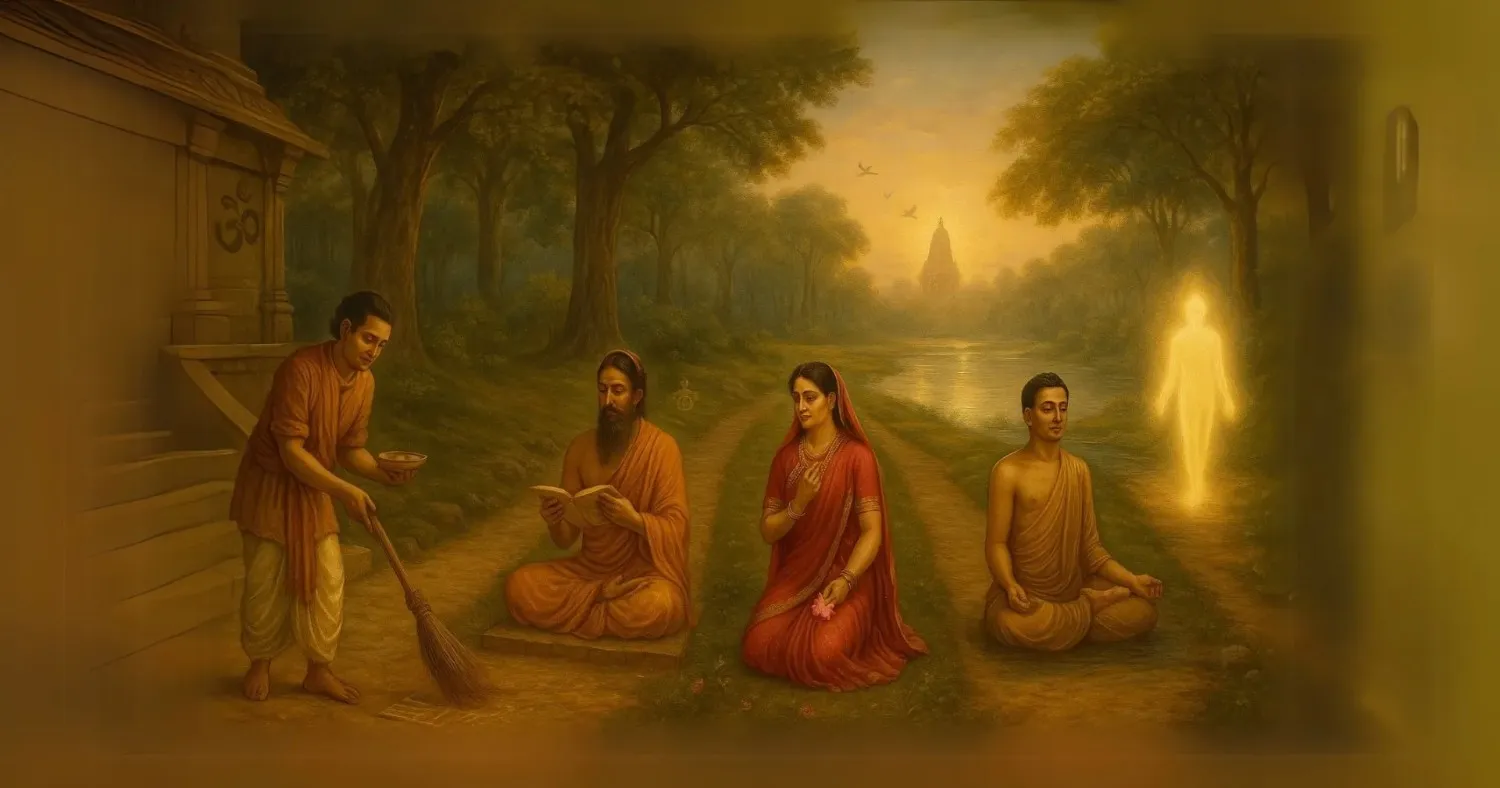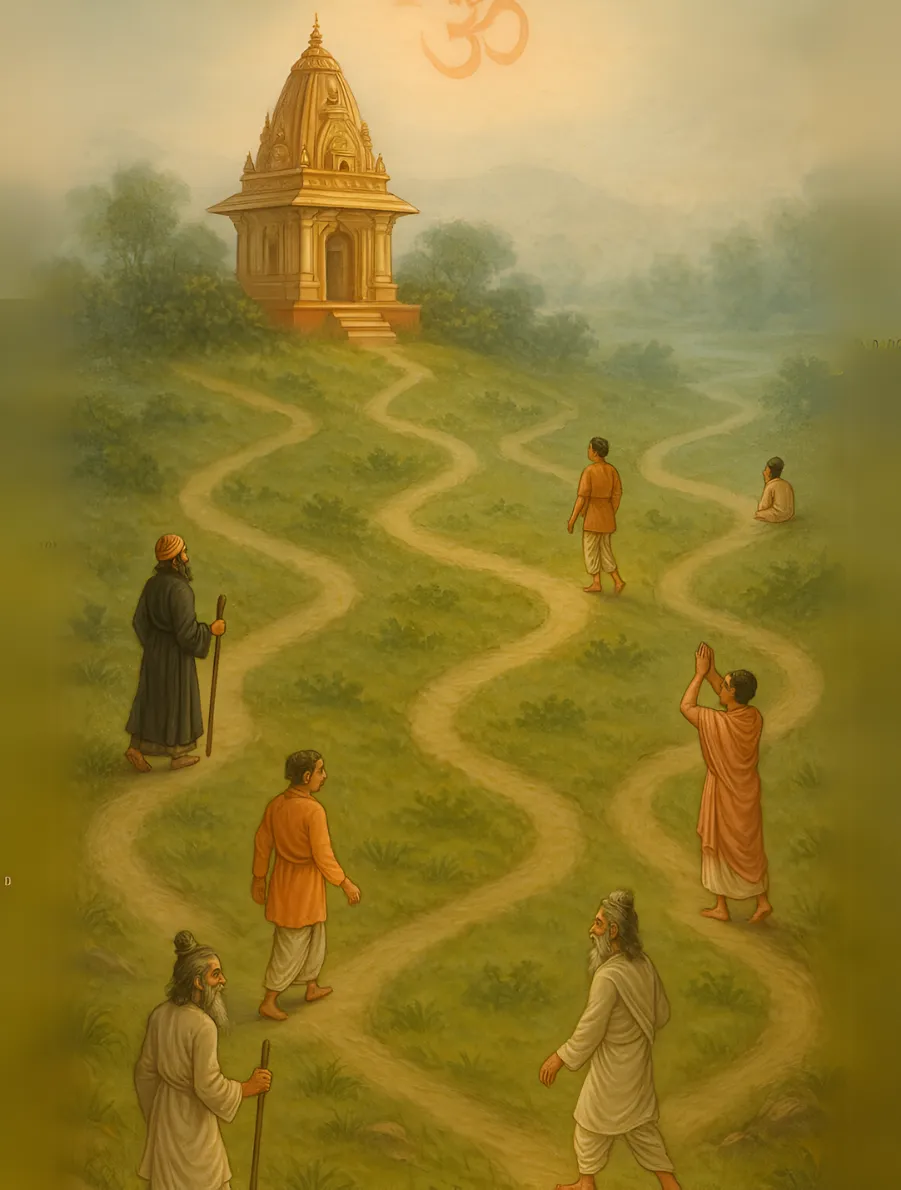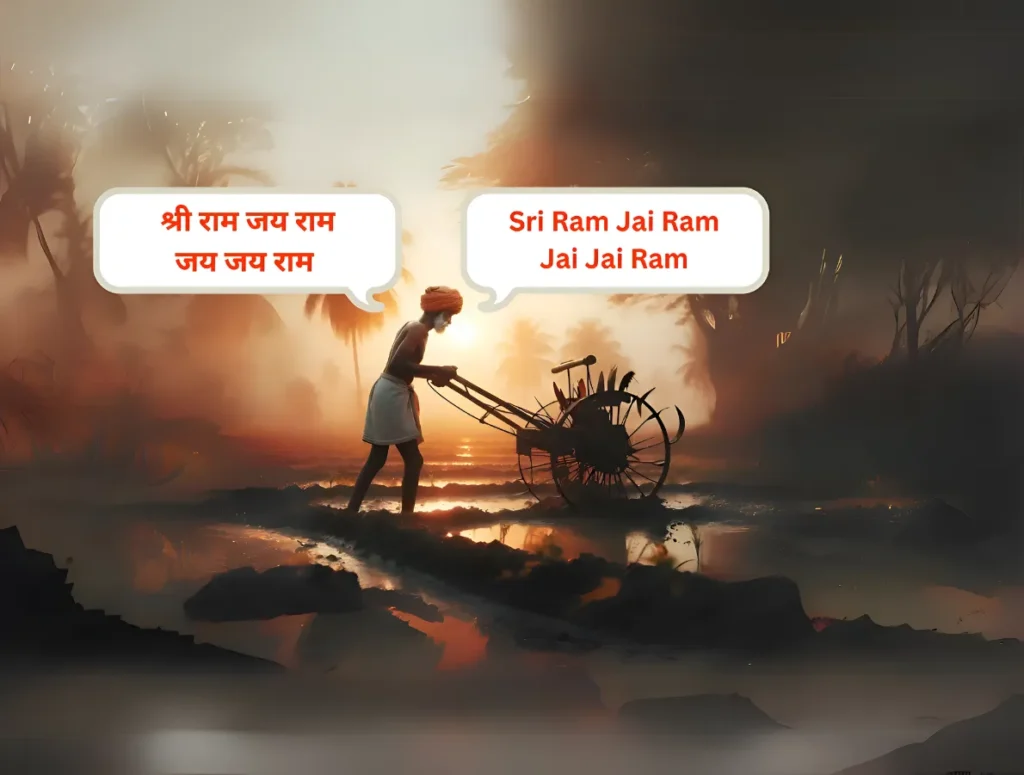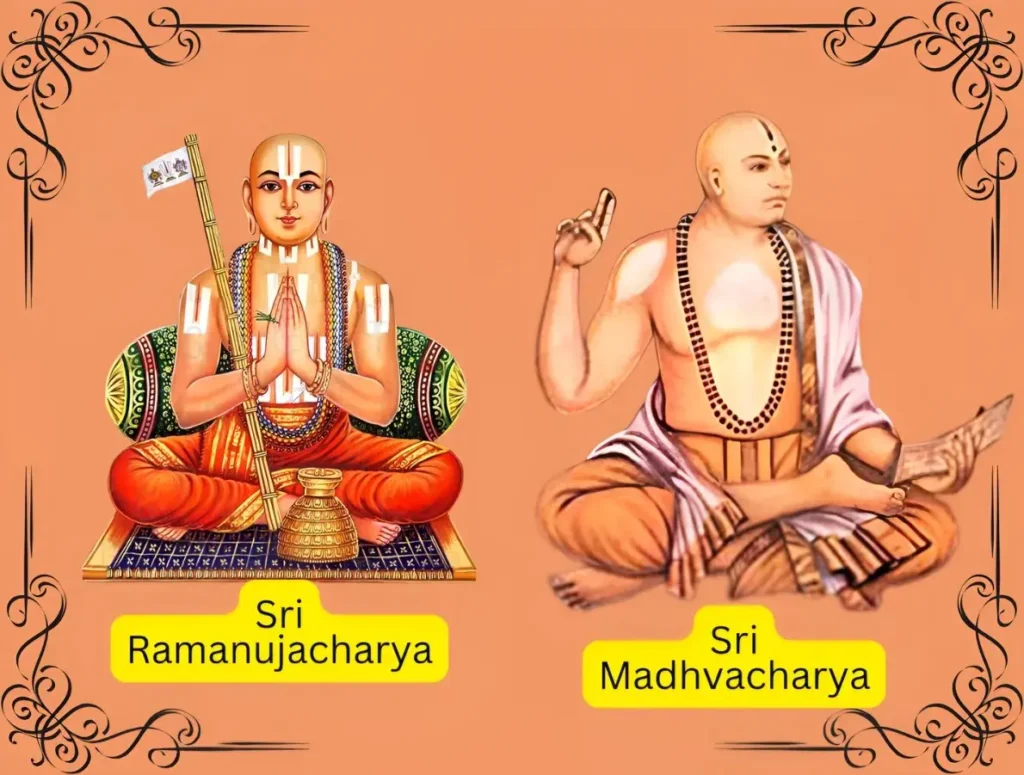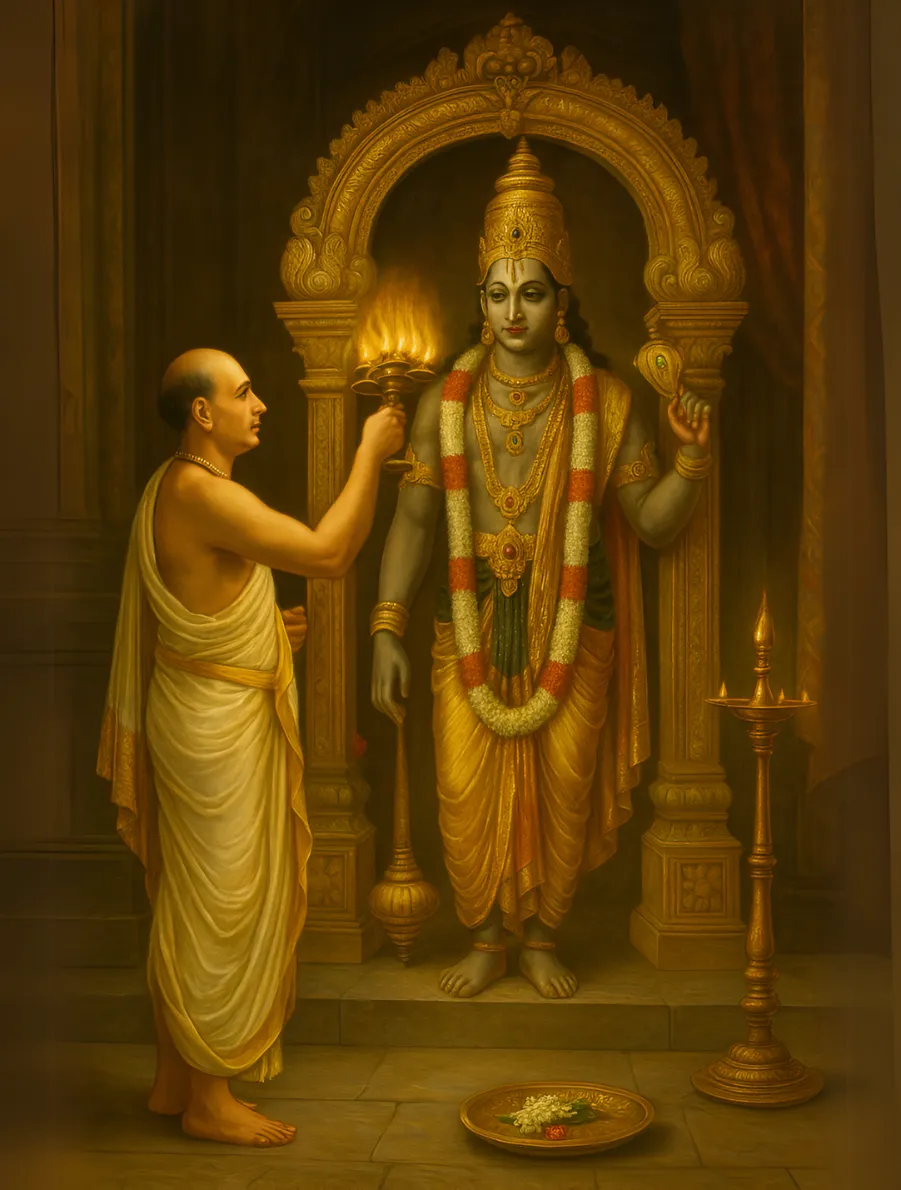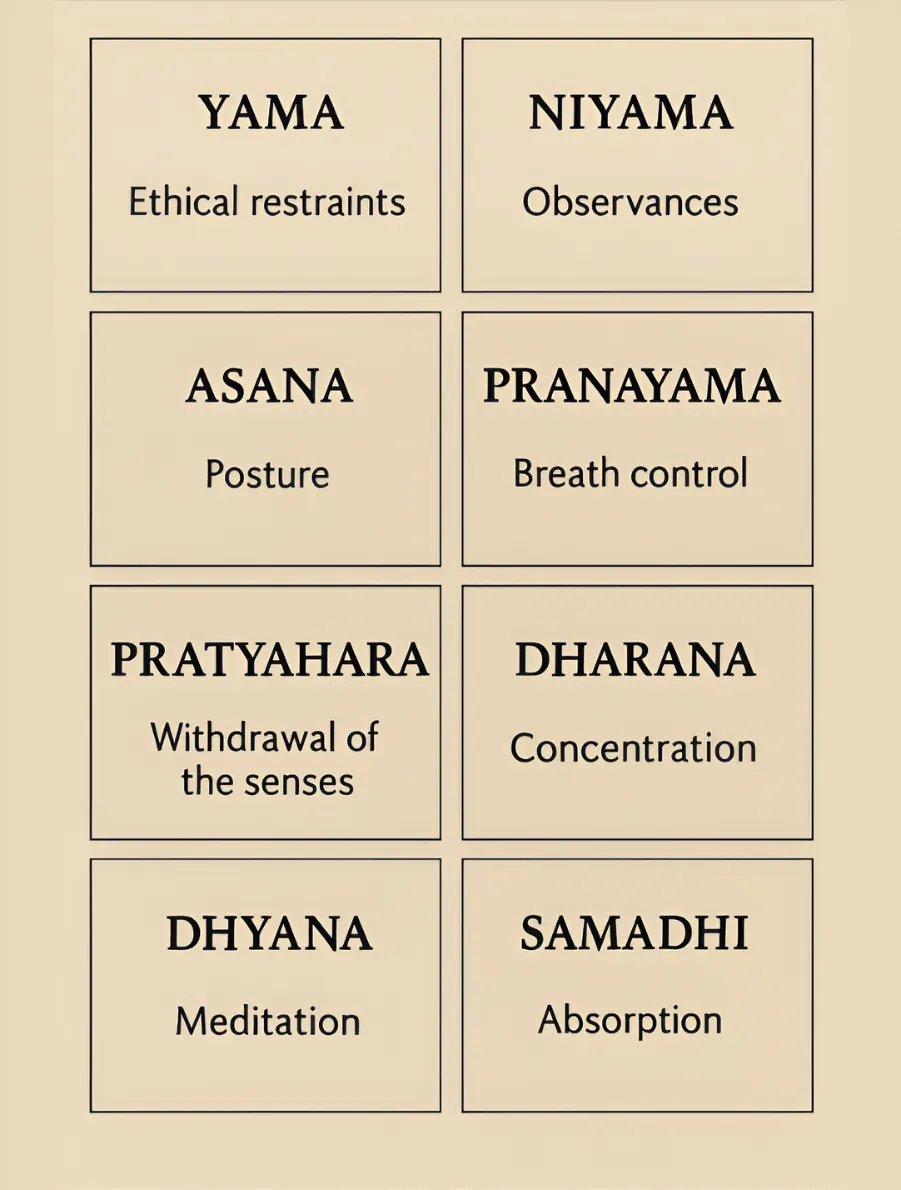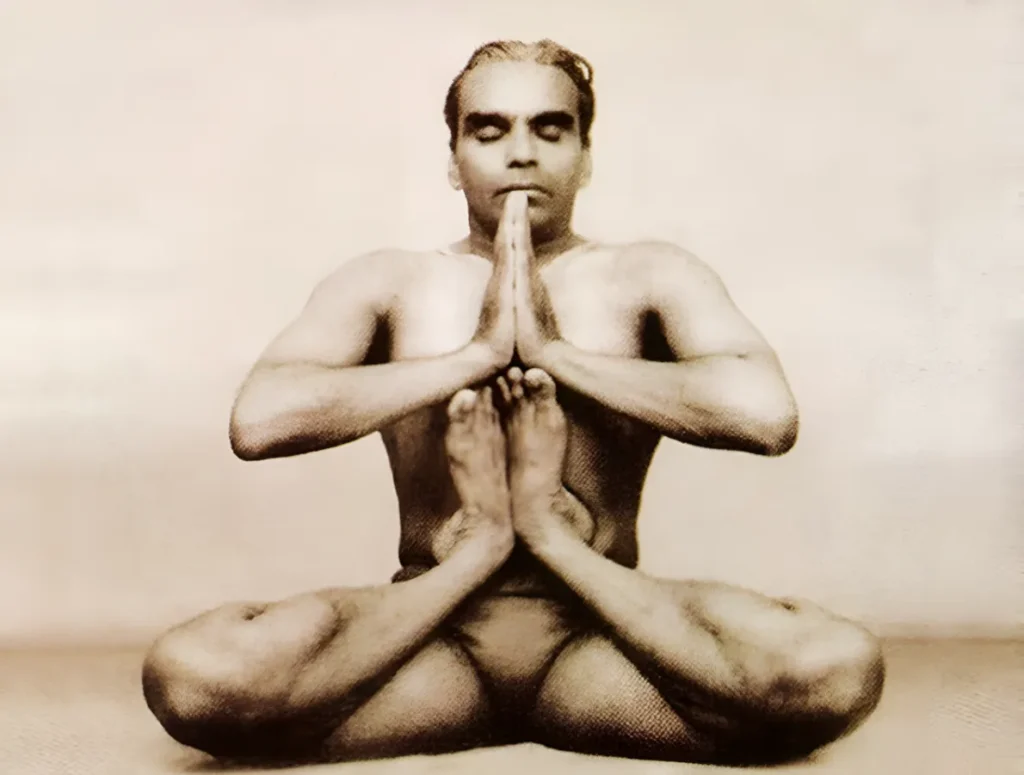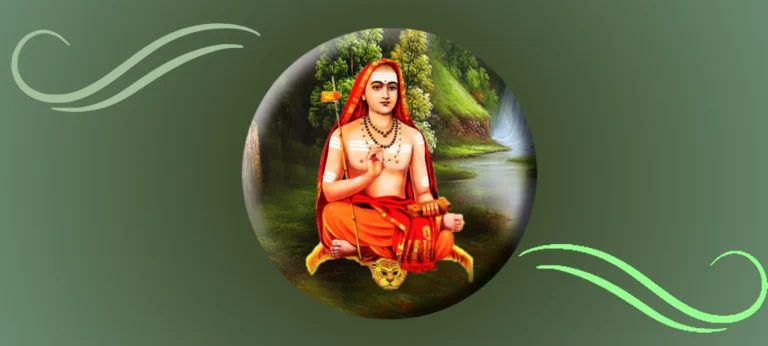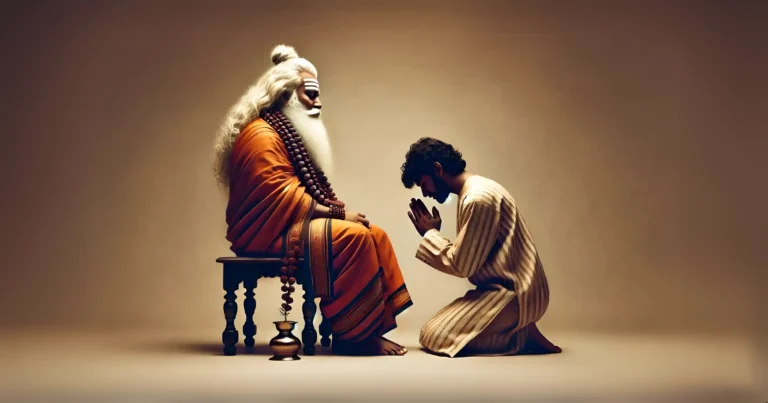Please Like the Blog and Share it for Maximum Reach
Table of Contents
The 6 Powerful Yogic Consciousness Paths
- Karma Yoga (for purification)
- Jnana Yoga (for discrimination)
- Bhakti Yoga (for devotion)
- Raja Yoga (for mental mastery)
- Hatha Yoga (for discipline)
- Laya Yoga (for inner dissolution)
Final goal: Sharanagati (Surrender)
The Basis of 6 Major Paths towards Evolution of Consciousness
There are 6 main Streams of Yoga that lead us Godward, the cherished goal of each of the 8.4 million species that abound the world. Here we discuss the 6 paths and the Royal exit that actually makes our goal a reality, considering that Vedic civilization has been experimenting with so many paths to achieve this single objective since time immemorial.
Even today people are seeking inner alignment or Bhagawan through their own cherished ways, knowingly or unknowingly because inner joy is like that scent of honey towards which even a blind ant is naturally attracted to.
You’ll find someone sitting in silence before sunrise. Others chant softly as they walk. Some serve in temples. Some never mention Bhagawan but live with quiet discipline. They don’t all look the same, or even agree on everything. And yet, they’re part of one vast stream, what we call Sanatana Dharma.
Through the centuries, sages and acharyas like Bhagavatpad Adi Shankaracharya, Sri Ramanujacharya, Sri Madhvacharya, Sri Nimbarkacharya, Sri Vallabhacharya and Sriman Chaitanya Mahaprabhu brought light to six major spiritual approaches. They didn’t invent these paths. They showed how they work, in real life, for real people.
And among these paths, one is not only universal, but especially fit for this restless age. That path is Bhakti. In the modern context.
I would like to make a special mention of Jagadguru Shri Kripaluji Maharaj who has balanced the philosophy of the works of the Acharyas mentioned above and has established very firmly that none of their philosophies are pitted against each other rather they all talk of the same central theme, Brahman.
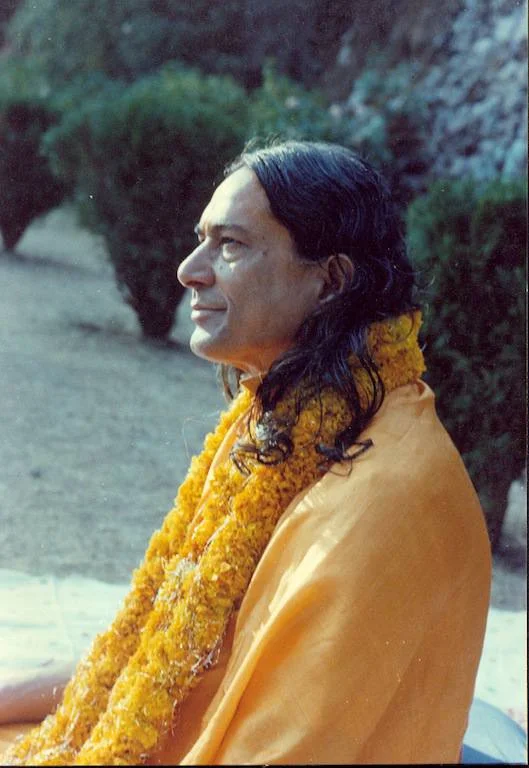
They have expressed their ideology based on the specific needs of particular groups of the Seeking Population. Hence Shri Kripaluji Maharaj is rightly called Samanvayacharya or “The Acharya who has reconciled all major philosophies”.
Some of these paths are steep, some subtle, some beautiful but slow. And yet, in this dark and restless time, one shines with quiet power, the one fueled by love and surrender. That path is Bhakti Yoga, not easier, but more direct. Not effortless, but more accomodative.
Let us begin with the first of the 6 major Paths, Karma Yoga.
Section 1: Karma Yoga – Action without Ego
Bhagavad Gita 3.9 States
श्लोक 1:
यज्ञार्थात्कर्मणोऽन्यत्र लोकोऽयं कर्मबन्धनः।
तदर्थं कर्म कौन्तेय मुक्तसङ्गः समाचर॥
yajñārthātkarmaṇo’nyatra loko’yaṃ karmabandhanaḥ|
tadarthaṃ karma kaunteya muktasaṅgaḥ samācara||
Meaning:
Doing an act for its own sake or to gain something traps us in a web. But if it’s done as an offering to Vishnu, without clinging, it frees instead of binds.
This Shloka from the Gita sums up Karma Yoga directly without beating around the bush. We must understand that what we bring with us is Karma or unresolved actions from previous lifetimes.
Unless they are resolved through the methodology as recommended by the sages and the Vedic Scriptures, the load of Karma is only going to build. So the solution is Karma Yoga, the above Shloka discusses, that shall resolve circumstances, situations and intentions, so as to release us from the endless whirligig of life and death.
Bhagavad Gita 2.47 States
श्लोक 2:
कर्मण्येवाधिकारस्ते मा फलेषु कदाचन।
मा कर्मफलहेतुर्भूर्मा ते सङ्गोऽस्त्वकर्मणि॥
karmaṇyevādhikāraste mā phaleṣu kadācana|
mā karmaphalaheturbhūrmā te saṅgo’stvakarmaṇi||
Meaning:
Bhagavan advises us to relinquish expectation of favourable or unfavourable results. He said, do your work, and move on. Don’t pause in fear. Don’t cling to what comes next.
When Bhagawan speaks of Karma Yoga in the Gita, he isn’t asking us to act for success. Acharyas like Sri Ramanuja and Sri Madhva go further and say that it’s not just action, but intention. It’s about offering each act, each intention, however small, to the Divine.
In the Bhashya of Bhagavad Gita Sri Madhva says
यज्ञार्थसङ्गरहितं कर्म न बन्धकम्। यज्ञः वै विष्णुः
yajñārthasaṅgarahitaṃ karma na bandhakam| yajñaḥ vai viṣṇuḥ
Karma done for yajña (which is the same as Sri Vishnu) without attachment leads to liberation.
Sri Ramanuja explains that karma turns into yoga only when it’s done with a heart of service, what he calls kainkarya bhava, the soul’s longing to serve Narayana.
Sri Madhva teaches, we must direct all actions as worship to Vishnu rather than performing them as independent acts of righteousness.
We must drop the ego that clings to results.Even elaborate rituals lose their meaning unless they are acts of surrender. This is how karma becomes a bridge, not a burden.
Sri Madhvacharya takes an even more dualistic approach, asserting that the soul and Bhagawan are eternally distinct, and knowledge (jnana) comprises realizing one’s eternal dependence on the Supreme Being, usually Sri Vishnu, Narayana and any of the Incarnations of Bhagawan Vishnu.
Practically speaking, Jnana Yoga requires discrimination (viveka), detachment (vairagya), and a serene mind not easily swayed by sense objects. Yet in the age of Kali, where distraction is the norm, deep contemplative solitude is rare. For this reason, even the pursuit of knowledge is most safely undertaken in the spirit of devotion, as Bhagavan’s grace removes the veil.
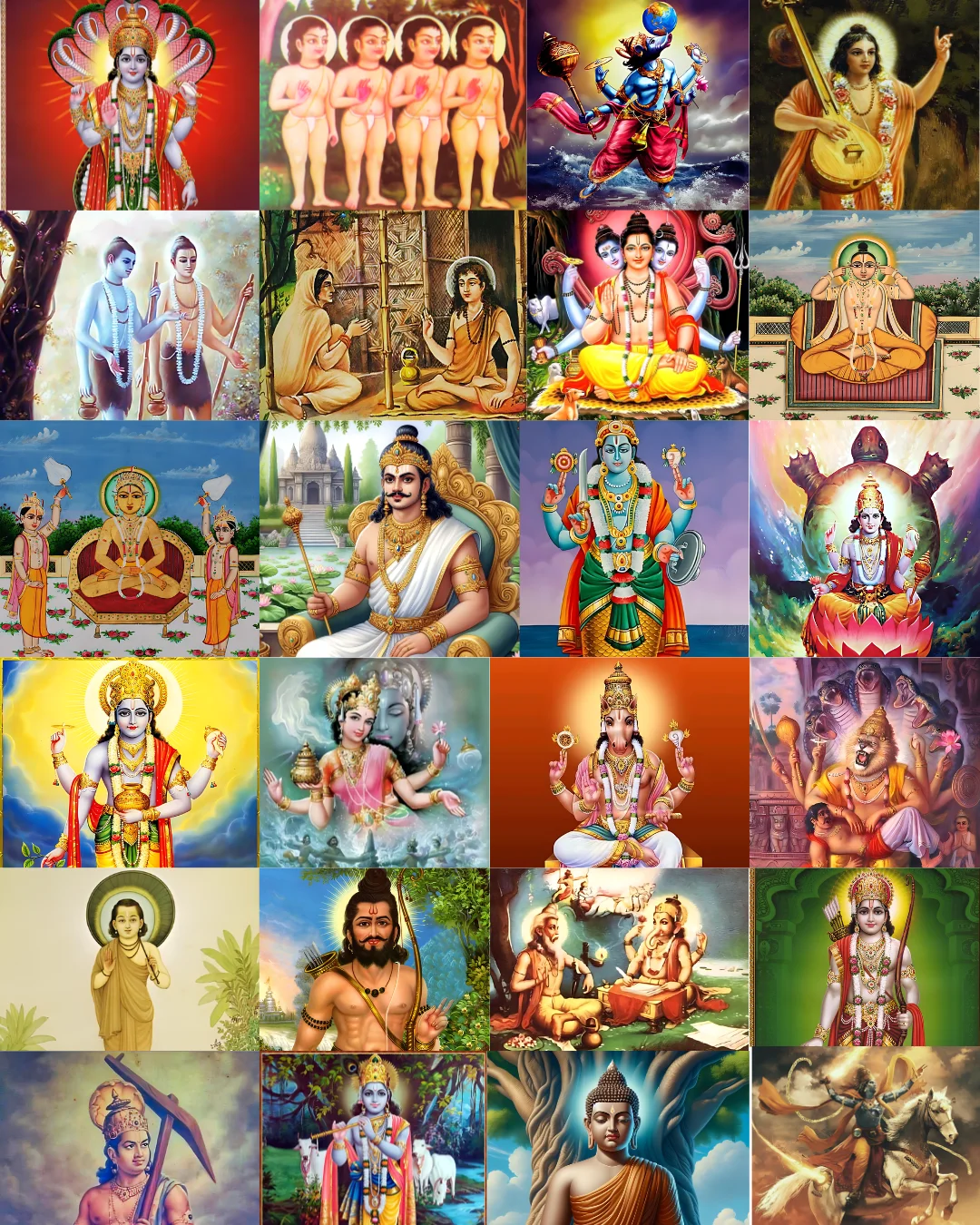
Bhagavatpad Adi Shankaracharya sees this as pointing to the non-dual identity of Atman and Brahman. Sri Ramanuja interprets it as qualified non-dualism (Vishishtadvaita), where the soul is a part of Brahman but not the same as Brahman. Sri Shankaracharya sees this as pointing to the non-dual identity of Atman and Brahman. Sri Ramanuja interprets it as qualified non-dualism , where the soul is a part of Brahman but not the same as Brahman.
SECTION 2: Jnana Yoga – Knowledge as a Path to the Divine
Bhagavad Gita 4.39 States
श्लोक 1:
श्रद्धावान् लभते ज्ञानं तत्परः संयतेन्द्रियः।
ज्ञानं लब्ध्वा परां शान्तिमचिरेणाधिगच्छति॥
śraddhāvān labhate jñānaṃ tatparaḥ saṃyatendriyaḥ|
jñānaṃ labdhvā parāṃ śāntimacireṇādhigacchati||
Meaning:
The one with faith, disciplined senses, and dedication to knowledge attains peace through realization.
Bhagavad Gita 2.40 states
श्लोक 2:
नेहाभिक्रमनाशोऽस्ति प्रत्यवायो न विद्यते।
स्वल्पमप्यस्य धर्मस्य त्रायते महतो भयात्॥
nehābhikramanāśo’sti pratyavāyo na vidyate|
svalpamapyasya dharmasya trāyate mahato bhayāt||
Meaning:
No effort on this path is wasted. Even a small step protects from great fear.
Jnana Yoga means pursuing Truth through discrimination (viveka), renunciation (vairagya), and meditation on the Self. Sri Adi Shankaracharya describes it as the direct means to liberation — the realization that the self is non-different from Brahman. For him, knowledge cuts through illusion like light in darkness.
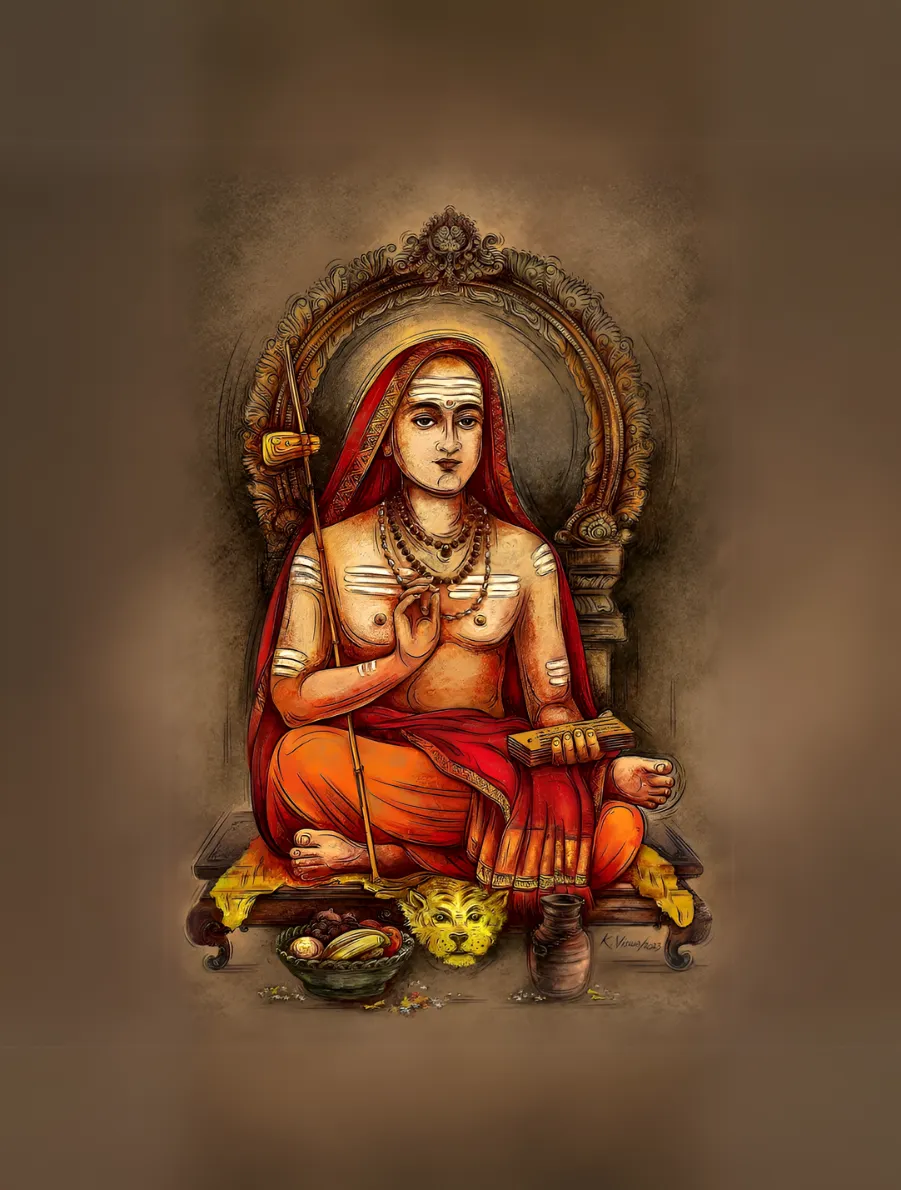
However, Sri Ramanujacharya and Sri Madhvacharya strongly emphasize that knowledge alone shall not free us. Knowledge must culminate in devotion. Sri Ramanuja holds that Jnana should be saturated with Bhakti — knowledge of Bhagawan should lead to service of Him. Sri Madhva asserts that the soul and Bhagawan are eternally distinct, and true knowledge is the understanding of one’s total dependence on Vishnu, while Sri Vishnu is eternally independent.
In Kali Yuga, where distractions are constant, Jnana Yoga is difficult to sustain in purity. Acharyas therefore recommend that even seekers of knowledge support their learning with chanting, devotion, and surrender to a qualified teacher or Guru.
Sri Shankara Writes about the Guru in the Gurorashtakam
शरीरं सुरूपं तथा वा कलत्रं
यशश्चारु चित्रं धनं मेरुतुल्यम्।
गुरोः अङ्घ्रिपद्मे मनश्चेन्न लग्नं
ततः किं ततः किं ततः किं ततः किं॥
śarīraṃ surūpaṃ tathā vā kalatraṃ
yaśaścāru citraṃ dhanaṃ merutulyam|
guroḥ aṅghripadme manaścenna lagnaṃ
tataḥ kiṃ tataḥ kiṃ tataḥ kiṃ tataḥ kiṃ||
“One’s physique may be superb, one’s consort likewise, one’s reputation resplendent and renowned, and one’s riches as high as Mount Meru; yet if one’s mind be not centered upon the lotus feet of the Guru, what then, what then, what then”
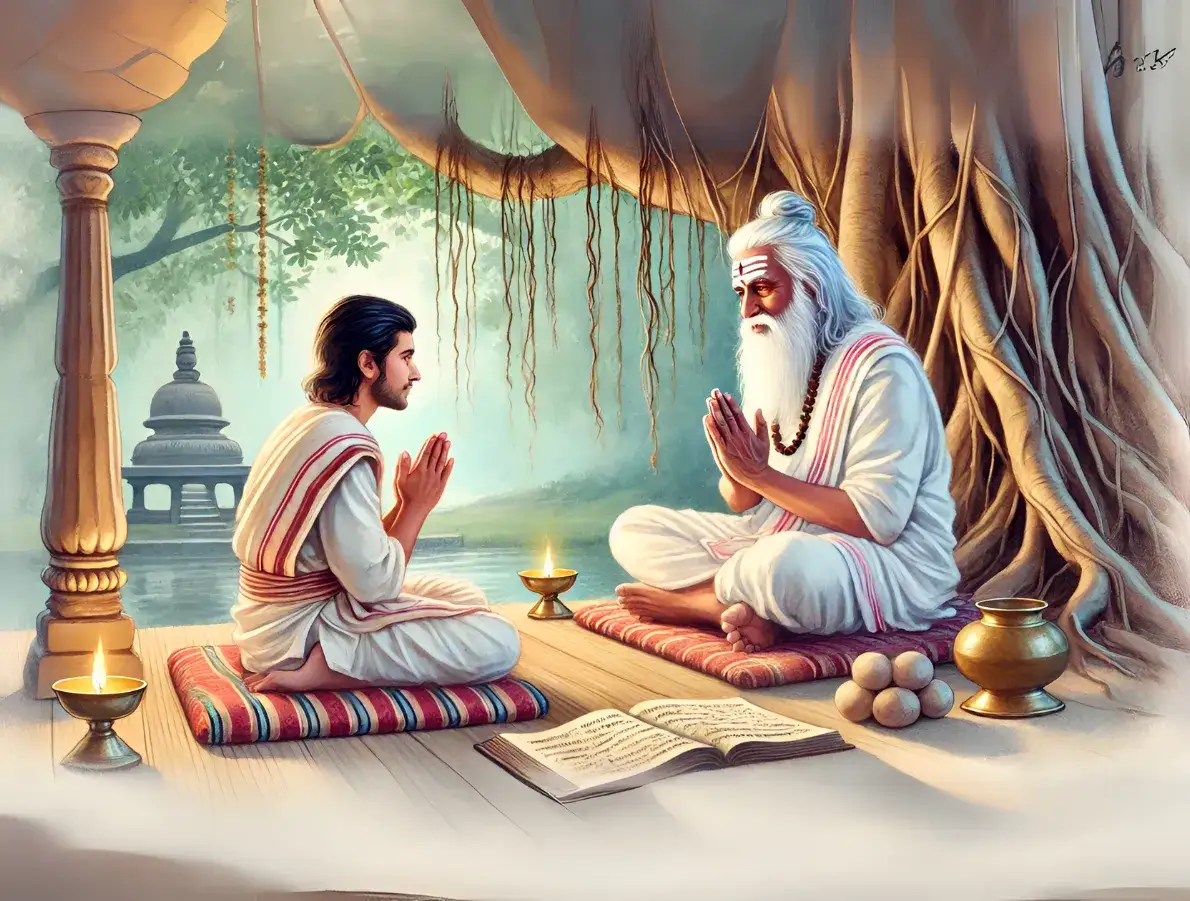
In the end, even knowledge bows to Bhakti. Jnana leads to humility only when guided by Grace, Grace of Guru and Bhagawan. Sri Shankaracharya wrote hymns in tears. Sri Ramanuja surrendered at the feet of Narayana while Sri Madhva sang of Vishnu’s glories. All paths of knowledge find rest in love.
SECTION 3: Bhakti Yoga–Supreme Path in Kali Yuga
The Srimad Bhagavatam Canto 2 Chapter 3 Verse 10 States
श्लोक 1:
अकामः सर्वकामो वा मोक्षकाम उदारधीः।
तीव्रेण भक्तियोगेन यजेत पुरुषं परम्॥,
akāmaḥ sarvakāmo vā mokṣakāma udāradhīḥ|
tīvreṇa bhaktiyogena yajeta puruṣaṃ param||
Meaning:
Whether one has no desires, many desires, or seeks liberation, the wise choice is the same: worship the Supreme with intense devotion.
The Srimad Bhagavatam Canto 1, Chapter 2 Verse 6 States
श्लोक 2:
स वै पुंसां परो धर्मो यतो भक्तिरधोक्षजे।
अहैतुकी अपरतिहता यया आत्मा सुप्रसीदति॥
Meaning:
True dharma is that which awakens bhakti, a love for the Lord that arises without cause and remains unbroken.Only that makes the soul truly peaceful.
Bhakti is not a soft path as many may feel. It is a fierce offering of the heart. When everything else breaks down, intellect, effort, pride, Bhakti still stands tall. In Kali Yuga, where the mind is restless, and the world feels too loud, Bhakti becomes our silence. It is not something we learn. It is something we allow.
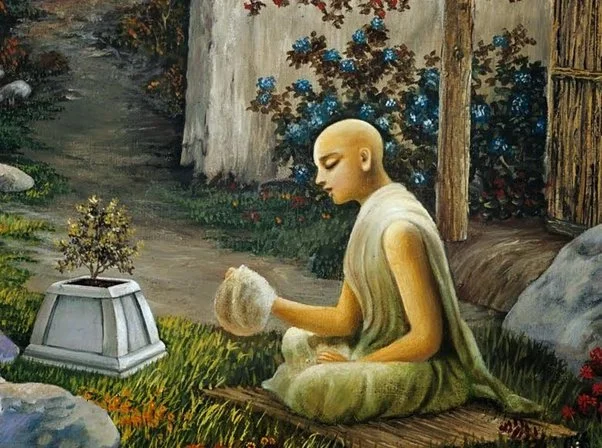
Sriman Chaitanya Mahaprabhu taught that even the lowest, the forgotten, the fallen, they too can reach the Highest simply by calling His name. No background needed. No scholarship. Just the heart, breaking open. He declares in his work the Shikshashtakam.
त्रिणादपि सुनीचेन
तरोरपि सहिष्णुना।
अमानिना मानदेन
कीर्तनीयः सदा हरिः॥
triṇādapi sunīcena
tarorapi sahiṣṇunā|
amāninā mānadena
kīrtanīyaḥ sadā hariḥ||
Which means:”One should chant the holy name of the Lord in a humble state of mind, thinking oneself lower than a blade of grass; one should be more tolerant than a tree, devoid of any sense of false prestige, and ready to offer all respect to others. In such a state of mind, one can chant the holy name of the Lord constantly.”
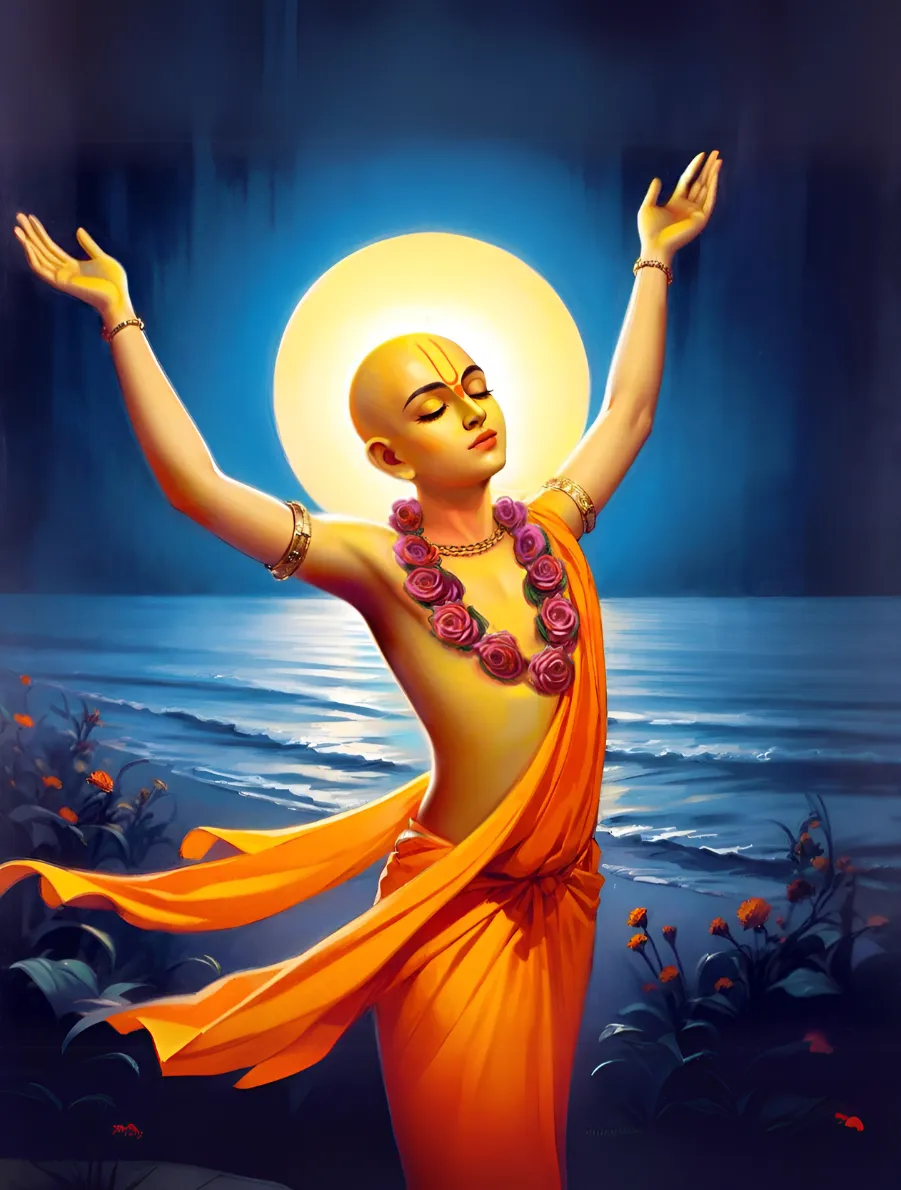
Sri Ramanujacharya said Bhakti grows when the soul bows in Prapatti, total surrender. It’s not about mood. It’s a daily rhythm: remembering, worshipping, serving. Even your breath becomes a chant if you let it.
Sri Madhvacharya warns us, don’t divide your love. Bhakti is only for Vishnu. Not for other Devatas. Not for abstractions, Only for the one who holds the chakra, who protects, who loves.
Sri Adi Shankaracharya, though known for jnana, left behind tearful prayers like Bhaja Govindam. Because even the wisest know, reason ends where Bhakti begins.
To Chaitanya, Bhakti is Bhagawan’s embrace.
To Ramanuja, it ends in surrender.
To Madhva, it’s the soul’s only rightful love.
And for us, it’s the one path left open in a closed age.
SECTION 4: Raja Yoga–Control of the Mind (Supported by Gita & Upanishads)
Bhagavad Gita 6.47 States
श्लोक 1:
योगिनामपि सर्वेषां मद्गतेनान्तरात्मना।
श्रद्धावान्भजते यो मां स मे युक्ततमो मतः॥
yogināmapi sarveṣāṃ madgatenāntarātmanā|
śraddhāvānbhajate yo māṃ sa me yuktatamo mataḥ||
Translation:
“Of all yogis, the one with full faith who worships Me with inner devotion is the best of all.”
Bhagavad Gita 6.15 States
श्लोक 2:
युञ्जन्नेवं सदा आत्मानं योगी नियतमानसः।
शान्तिं निर्वाणपरमां मत्संस्थामधिगच्छति॥
yuñjannevaṃ sadā ātmānaṃ yogī niyatamānasaḥ|
śāntiṃ nirvāṇaparamāṃ matsaṃsthāmadhigacchati||
Translation:
“Constantly engaging the mind in this manner, the yogi, with a disciplined mind, attains peace and ultimate liberation in Me.”
Raja Yoga, the royal path, appears in both the Bhagavad Gita and Patanjali’s Yoga Sutras as a disciplined approach to mastering the mind and uniting with the Self. It emphasizes restraint, concentration, and meditative absorption.
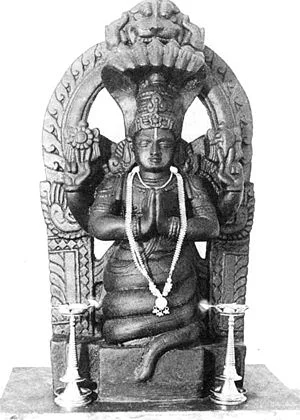
However, the Gita uniquely directs this internal control toward divine union, not toward impersonal absorption. Raja Yoga becomes truly effective when we surrender the mind to Bhagavan, rather than merely restraining it into silence.
While the classic system includes Yama, Niyama, Asana, Pranayama, Pratyahara, Dharana, Dhyana, and Samadhi, different schools interpret the highest limb, Samadhi, in their own way. Sri Adi Shankaracharya views it as the realization of the Self’s identity with Brahman. But Sri Ramanuja and Madhva reinterpret it as loving contemplation upon the distinct, eternal Vishnu, not identity with Him, definitely not merging in Him.
Sri Madhva warns that mental perfection without surrender to Bhagawan can lead to pride and illusion. Sriman Chaitanya Mahaprabhu, though externally not a Raja Yogi, achieved supreme inner absorption (antaranga bhakti) simply through ecstatic kirtan, showing that love for Krishna is the highest form of mental concentration.
In Kali Yuga, disciplined meditation is increasingly difficult because of distraction and lifestyle demands. Yet the Gita assures that even among yogis, the most devoted, one who remembers and worships Krishna with unwavering faith, is the most advanced. Thus, even Raja Yoga finds its culmination in Bhakti.
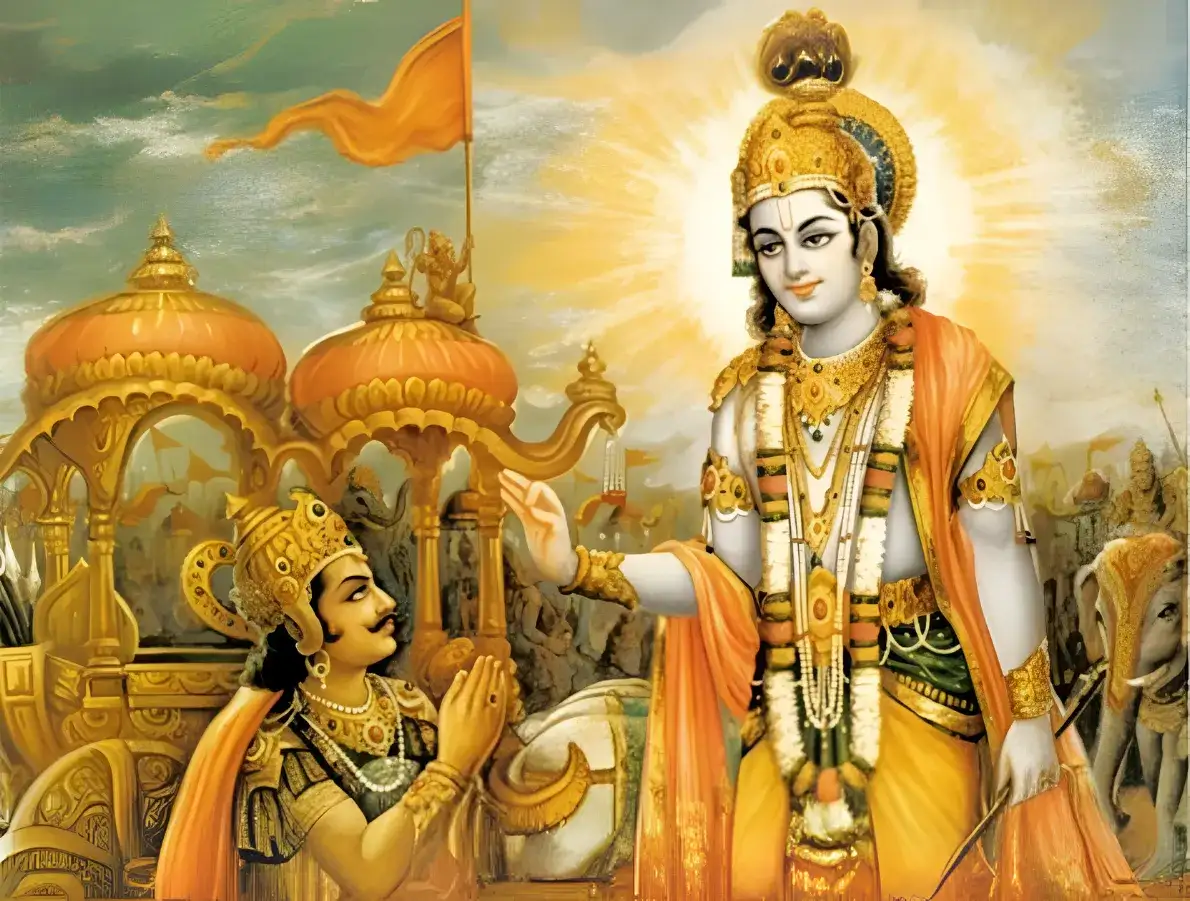
Raja Yoga must ultimately converge in Bhakti, or it risks remaining dry introspection. All Acharyas agree we must offer the mind at the Lord’s feet.
SECTION 5: Hatha Yoga–Preparation, Not the Goal
Bhagavad Gita 6.11 States
श्लोक 1:
शुचौ देशे प्रतिष्ठाप्य स्थिरमासनमात्मनः।
नात्युच्छ्रितं नातिनीचं चैलाजिनकुशोत्तरम्॥
śucau deśe pratiṣṭhāpya sthiramāsanamātmanaḥ|
nātyucchritaṃ nātinīcaṃ cailājinakuśottaram||
Translation:
“Having established a firm seat in a clean place, neither too high nor too low, covered with cloth, deerskin, and kusa grass, one should prepare to meditate.”
The Patanjali Yoga Sutra 2.47 States
श्लोक 2:
प्रयत्नशैथिल्यानन्तसमापत्तिभ्याम्॥
prayatnaśaithilyānantasamāpattibhyām||
Translation:
“We achieve perfection in posture by relaxing all effort and becoming absorbed in the infinite.”
Hatha Yoga, widely recognized today for its postures (asanas) and breath control (pranayama), originally served as a supportive discipline, never the goal. The Bhagavad Gita outlines the sacred setup for this, not a yoga mat in a studio, but a sanctified space for communion with the Divine. Patanjali’s Yoga Sutras affirm, we perfect effort in asana only when we make it effortless and allow the mind to merge in the infinite.
Sri Ramanujacharya permits Hatha practices only when they act as aids to Bhakti. If they distract from remembrance of Narayana or produce pride in physical mastery, they are to be avoided. Sri Madhvacharya is even more explicit: siddhis (yogic powers) are distractions unless surrendered to Vishnu. For Sriman Chaitanya Mahaprabhu, ecstatic love, not asanas, is the real transformation of body and mind.
In this age of Kali, the danger lies in reducing Hatha Yoga to a fitness routine. When breath and posture become mechanical, they fail their higher purpose. But when performed with humility and as an offering to the Lord, they sanctify the body as a temple of Bhakti. Clean eating, disciplined habits, and simple living, all these form the outer shell for cultivating inner devotion.
The body is not an object of worship; it is a tool for surrender. Without Bhakti, Hatha Yoga remains external. With Bhakti, it becomes a sacred discipline of offering.
SECTION 6: Laya Yoga – Dissolution Only in the Lord
The Mundaka Upanishad Chapter 3 Section 2 Verse 9 states
श्लोक 1:
स यो ह वै तत् परमं ब्रह्म वेद ब्रह्मैव भवति।
नास्याब्रह्मवित्कुले भवति।
तरति शोकं तरति पाप्मानं गुहाग्रन्थिभ्यो विमुक्तोऽमृतो भवति॥
sa yo ha vai tat paramaṃ brahma veda brahmaiva bhavati |
nāsyābrahmavit kule bhavati |
Laya Yoga, or the yoga of absorption, describes the soul’s surrender into the Ultimate. The Upanishads point to this as the great confluence of all yogas, the stilling of waves, the merging with the shoreless ocean. But the acharyas disagree on what exactly this ‘merging’ means.
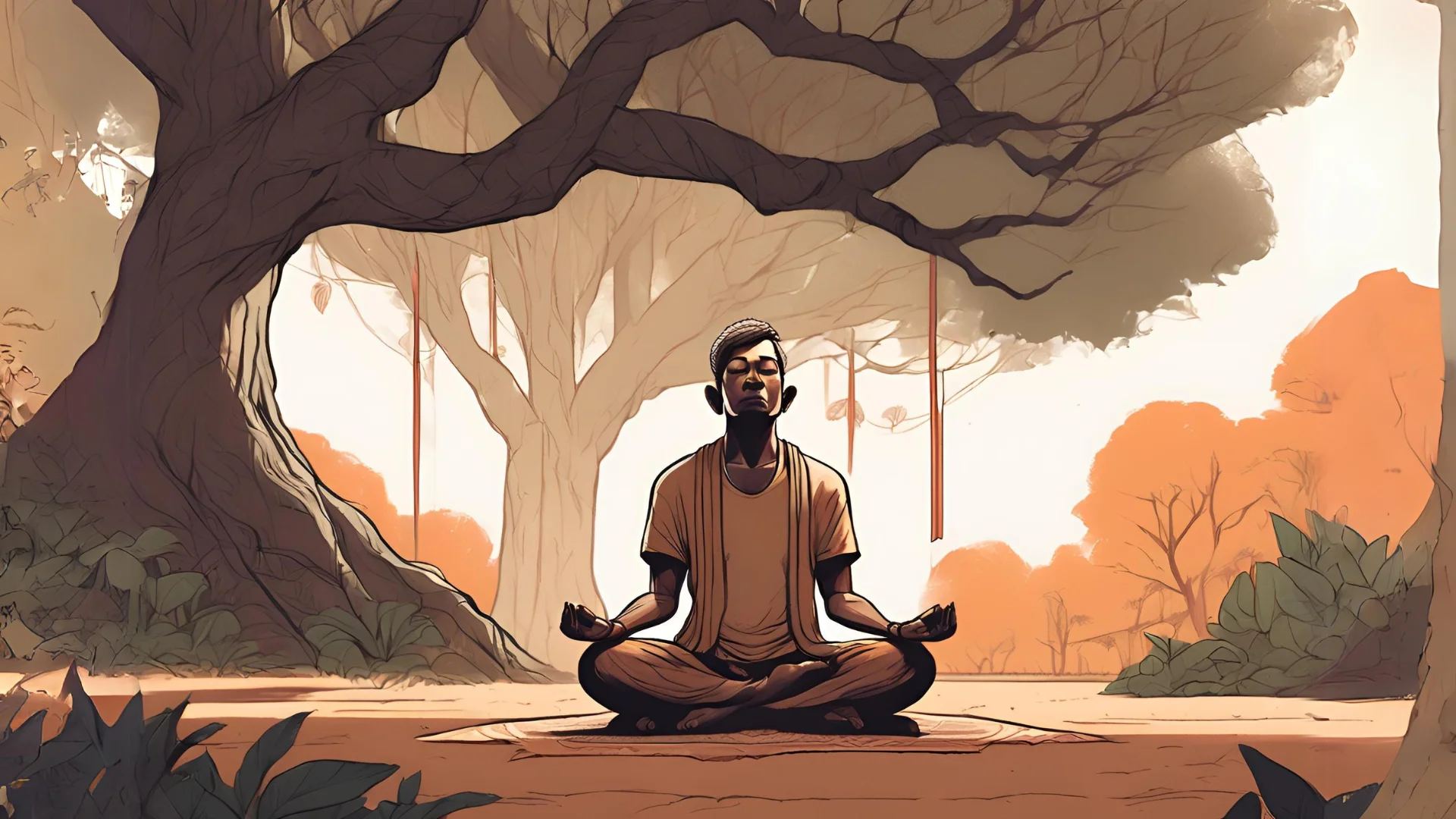
For Sri Adi Shankaracharya, it is the disappearance of ignorance, the realization that the individual soul and Brahman were never truly separate. For Sri Ramanuja, it is not a merging of identity, but a merging of will, the soul forever serving the Lord in eternal individuality. And Sri Madhva insists even further: the soul is always distinct. Laya is harmony, not union, the offering
The Śvetāśvatara Upaniṣad (6.23) reveals the secret of how Para Bhakti or ultimate Attachment to Bhagavan is attained and in fact this is the crux of Bhakti, the crest-jewel of all teachings, among all forms of Sadhana.
यस्य देवे परा भक्तिर्
यथा देवे तथा गुरौ
तस्यैते कथिता ह्य् अर्थाः
प्रकाशन्ते महात्मनः
yasya deve parā bhaktir
yathā deve tathā gurau
tasyaite kathitā hy arthāḥ
prakāśante mahātmanaḥ
The true import of the scriptures is revealed only to those great souls who have the same unflinching faith and parā-bhakti (transcendental devotion) for their guru as they have for the Supreme Lord.
Sharanagati Yoga – The Yoga of Surrender
The Srimad Bhagavatam Canto 11 Chapter 29 Verse 34 states
श्लोक 1:
मर्त्यो यदा त्यक्तसमस्तकर्मा निवेदितात्मा विचिकीर्षितो मे।
तदामृतत्त्वं प्रतिपद्यमानो मयात्मभूयाय च कल्पते वै॥
martyo yadā tyaktasamastakarmā niveditātmā vicikīrṣito me|
tadāmṛtattvaṃ pratipadyamāno mayātmabhūyāya ca kalpate vai||
Translation:
“When a mortal gives up all karma and fully surrenders to Me, desiring only to do My will, he attains immortality and becomes qualified to partake in My divine nature.”
There exists a Traditional Sharanagati Stotra, echoed in Bhakti traditions which goes like this
श्लोक 2:
त्वमेव शरणं गोविन्द! त्वमेव शरणं मम।
त्वया विनाऽन्यं न जाने, शरणं करुणानिधे॥
tvameva śaraṇaṃ govinda! tvameva śaraṇaṃ mama|
tvayā vinā’nyaṃ na jāne, śaraṇaṃ karuṇānidhe||
Translation:
“You alone are my refuge, O Govinda! I know no shelter apart from You. O ocean of mercy, accept my surrender.”
Bhakti is not emotionalism. It is indeed, clarity. And Sharanagati Yoga is the highest refinement of that Bhakti, when the soul stands empty-handed before the Lord, saying: “I have nothing to give but myself.” This is not the end of yoga. It is the fruit of all yoga.
In Kali Yuga, where distractions reign and qualifications decline, Sharanagati is the fruit of love. Nothing equals the power of surrender. And this surrender is not loss, it is divine gain. A soul that bows becomes the dearest of the Lord.
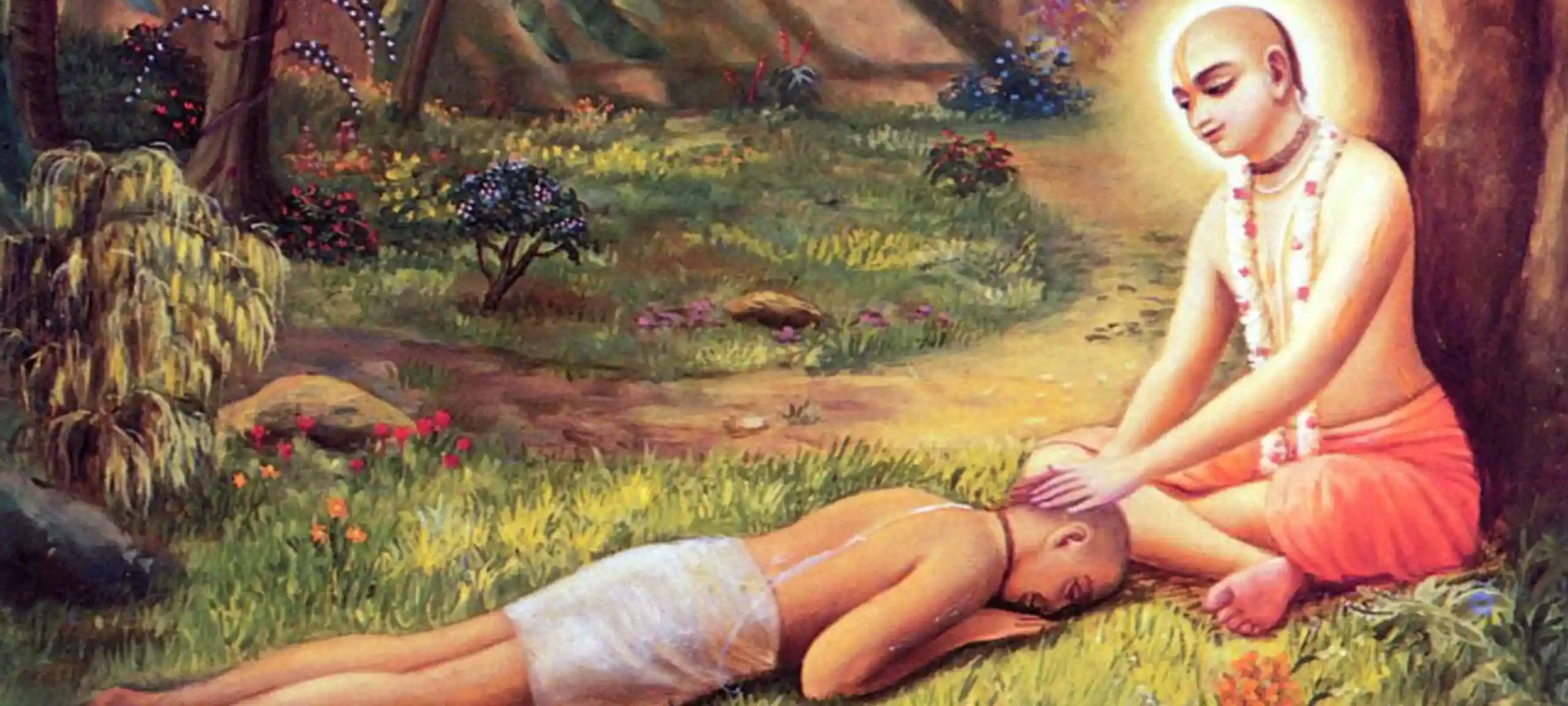
One must understand that one can “desire to Surrender”, this is indeed the final exit from the highway of Bhakti. But this exit becomes visible only through Grace.
When it shall open, is a matter of Grace of Guru and Bhagawan and hence it is called the Fruit. Out of the 5 fundamental processes of Bhakti namely Guru Seva, Sadhana, Satsanga, Satya and Sharanagati, Satya is the final belt of the highway and Sharanagati is the exit that becomes visible towards the end of your beginningless journey towards Bhagavat Prapti.
Please Like the Blog and Share it for Maximum Reach

